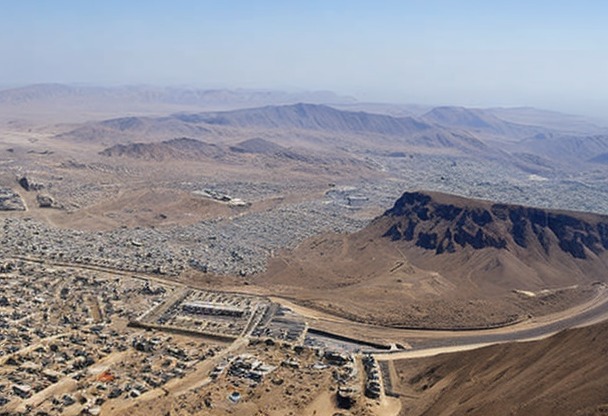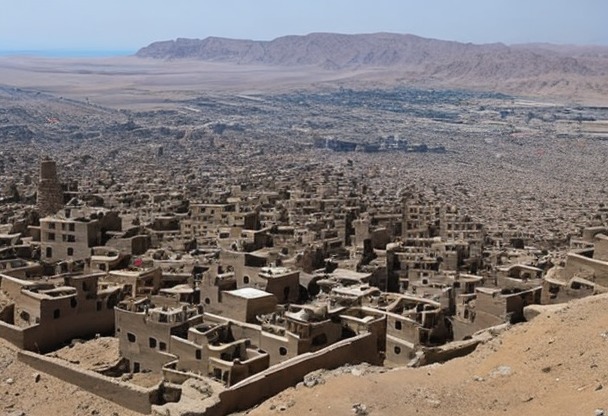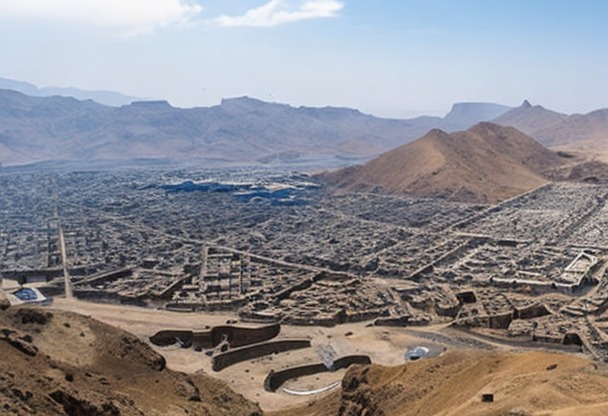WHEN TO TRAVEL TO Yemen
Choosing the right period for your trip to Yemen can make all the difference. It's important to consider climatic elements, seasonal events and busy tourist periods to maximize your travel experience.

Location
Climate
Yemen's climate: The best times to travel
Yemen is located on the Arabian Peninsula, and enjoys a desert climate with regional variations. In general, there are two seasons: the dry season and the wet season (or monsoon). The best time to visit Yemen is from October to February.when temperatures are cooler and rainfall lower.Dry season: October to February
The dry season is generally considered the best time to visit Yemen. During these months, temperatures are moderate, varying between 20°C and 30°C during the day, and dropping to 5°C at night in some mountainous regions. Rainfall is also very low, making travel easier.Wet season: March to September
The wet season is characterized by higher temperatures, reaching up to 40°C in some regions. Rainfall is also heavier, particularly during the monsoon season between June and August. Travel may be more difficult due to flooded roads and high humidity. It is therefore generally advisable to avoid this period when visiting Yemen.Major cultural events and public holidays in Yemen
Yemen hosts numerous cultural events throughout the year, offering travelers a unique opportunity to discover local traditions and immerse themselves in Yemeni culture. Here are some of the most important events and holidays to consider when planning your trip:- National holiday: Celebrated on May 22, National Day marks the unification of Yemen in 1990. Festivities take place throughout the country, with parades, fireworks and concerts.
- Ramadan: The holy month of Ramadan is observed by Muslims all over the world, including Yemen. During this period, the faithful fast from sunrise to sunset. Restaurants and shops may have modified opening hours, and some tourist activities may be limited. Ramadan generally lasts 29 or 30 days, and the date varies from year to year.
- Eid el-Fitr: Marking the end of Ramadan, Eid al-Fitr is an important holiday in Yemen. Families gather to share festive meals and give gifts to children. Numerous activities are organized throughout the country, and tourist sites can be very crowded.
- Eid al-Adha: Also known as the "Feast of Sacrifice", this celebration takes place around 70 days after the end of Ramadan. It commemorates the sacrifice of Abraham and is marked by prayers, family meals and donations to the needy. As with Eid el-Fitr, tourist sites may be busier during this period.
Low and high season in Yemen
As already mentioned, the best time to visit Yemen is from October to February. This period also corresponds to the peak tourist season, with a greater influx of travellers. It is therefore advisable to book your accommodation and activities in advance to avoid unpleasant surprises.Low season: March to September
The low season coincides with the wet season and monsoon season, making weather conditions less favorable for travel. However, if you don't mind the rainfall and higher temperatures, you can take advantage of generally lower accommodation rates and less crowded tourist sites.High season: October to February
High season is the most popular period for travelers, thanks to ideal weather conditions. Accommodation prices can be higher and tourist sites more crowded. So plan your trip well in advance to make the most of your stay in Yemen.Insurance

Your credit card does not cover you in all situations, that is whyIt is essential to take out insurance before you leave to avoid any unpleasant surprises. If you need to see a doctor or be hospitalized, in some countries, medical costs are very high and you will then find yourself having to pay several thousand euros.
Our partner Chapka Insurance proposes the contract CAP ASSISTANCE 24/24 with many essential guarantees.


Flights

Your flight has been cancelled or delayed ?
You may be eligible for a compensation of up to €600 ! For this, lawyers are responsible for handling your claim with the airline and are only paid when the reimbursement is effective.
In conclusion, no financial risk for you, only advantages!
Immigration statistics for Yemen
According to available data, there has been a significant increase in the number of immigrants arriving in Yemen in recent years. In fact, the current humanitarian crisis has led to a massive influx of refugees and migrantsThese are mainly from neighboring countries such as Ethiopia and Somalia, but also from further afield, such as Syria.Number of immigrant arrivals per year
Here are some figures on the number of immigrants arriving in Yemen:- In 2015: approximately 117,000 arrivals
- In 2016: approximately 111,500 arrivals
- In 2017: approximately 99,000 arrivals
- In 2018: around 150,000 arrivals
- In 2019: approximately 138,000 arrivals
Immigrant origin
The main nationalities of immigrants to Yemen are as follows:- Ethiopia about 90 % of immigrants
- Somalia about 10 % of immigrants
- Other countries (notably Syria, IraqBangladesh: less than 1 % of immigrants
Most popular visas in Yemen
Despite the political and security situation, some visas are still issued by the Yemeni authorities. The most commonly requested types of visa are :- Work visa
- Family visit visa
- Study visa
- Transit visa
International tourism figures for Yemen
Until the late 2000s, Yemen was one of the most popular tourist destinations on the Arabian Peninsula. Visitors were attracted in particular by the country's archaeological and architectural treasures, such as the ancient city of Shibam, nicknamed "The Great City".the Manhattan of the desert"or the archaeological site of Marib.The decline in tourism since 2011
Yemen's tourism sector has been severely affected by the political turmoil triggered by the Arab Spring in 2011, as well as by the civil war that has been raging since 2014. As a result, the number of international tourist arrivals has fallen drastically:- In 2010: approximately 934,000 arrivals
- In 2011: approximately 196,000 arrivals
- In 2012: approximately 144,000 arrivals
- In 2013: approximately 61,000 arrivals
The uncertain future of Yemeni tourism
Given the humanitarian crisis affecting the country, with millions of lives at risk and a largely destroyed tourism infrastructure, it is difficult to envisage a rapid recovery of the tourism sector in Yemen. However, should the political and security situation improve, the country's cultural and natural potential could once again attract travellers in search of authentic, off-the-beaten-track discoveries.

